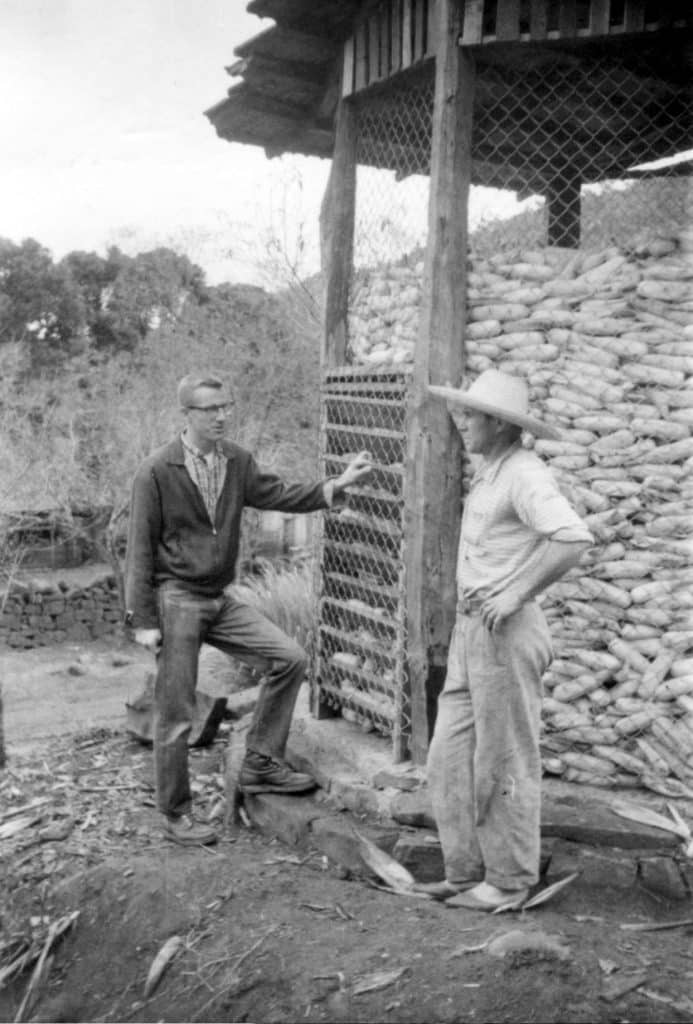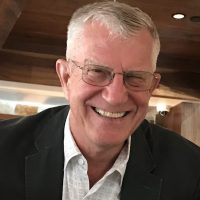I was a 21-year-old Peace Corps Volunteer working in community development in Capinzal, Santa Catarina, Brazil. I lived with Guilherme and Miriam Doin and their four children, Zezo, Jota, Tânia, and Jane. Working with the 4-H Club Foundation and local government counterparts, my Peace Corps partner and I offered services to youth by strengthening local 4-S clubs—the equivalent of our own 4-H club—in many towns in southern Brazil. I also played soccer and basketball in Capinzal, but I paid little attention to the effect I had on the people who lived in this small town where I lived
When I left Brazil in 1965, I felt I had done okay, but I sensed I could have done more. I was not sure how much difference I really made. When I returned to America, I became a business consultant, and I lost contact with my family in Brazil.

Corn-crib project in Capinzal
Forty-seven years after leaving Brazil, I received an email. “Are you the Joe Thigpen that lived with us when you were in the Peace Corps?” Zezo, Miriam’s oldest son had found me. Miriam was turning 80, and Zezo said it was her dream to invite me to return to Brazil. All the children had entered careers. Jota was a veterinarian, Jane was a biology teacher, Tânia was an artist, and Zezo was an engineer. Zezo gave me credit for setting an example of what an education could mean. I knew, however, that the real heroes were Miriam and Guilherme. They realized what an impact a young Peace Corps volunteer could have in their home.
My wife, Becky, and I decided to fly to Brazil to visit them, and to discover what difference I had actually made.
A few months before our visit, Zezo called to inform me that Miriam had passed away. Even so, he said that he and his siblings were determined to fulfill Miriam’s dream. When we arrived at the airport in Florianopolis we were embraced by the Doin family. They treated me as their “long lost brother” now returned.
When we reached Capinzal, Zezo insisted that we search the countryside for some of the 4-S “kids” I had worked with in 1964. Over coffee at one farmhouse, Naudi fondly remembered our experiences together when I was a Peace Corps volunteer. Down the road, Alduino, a local leader at the time, talked about planning a reunion of the “kids” for our next visit. As we left Brazil, we invited Zezo and Jota to visit us in our small town of Alachua, Florida.
Two years later, in 2014, they arrived, with their wives, Marcia and Regina. Our family in Florida, our neighbors, and our friends went all out to give them a positive experience in America, including a scramble golf tournament and river kayaking. We also flew the two couples to Los Angeles and Hollywood. Before they left, we agreed to visit the Doin family and some of the 4-S “kids” again in Capinzal.
My brother Larry took Portuguese lessons so he, his wife, and two daughters could join us in 2017 to meet Miriam’s children. The families all met in Ouro Preto, a nearby rural community where I had worked. To our surprise, 200 people arrived for a 4-S reunion ceremony, including the mayor and local journalists. Some of the “kids” and community leaders gave speeches about how 4-S had changed their lives. When I rose to speak in my cumbersome Portuguese, they broke into applause. Many people thanked me afterward, and a few “grandkids” told me about the stories that they had heard about me from their parents. It was a very moving day.
I now realize how lucky I was to learn at a reunion 50 years later about the difference I had made in their lives. I learned that who you are is as important as the competence and dedication you bring to the work. I am finally learning to embrace, and deeply appreciate the gifts that others have given to me. I will never forget the grace and kindness of these special people who shared two wonderful years with me while I was in the Peace Corps.




